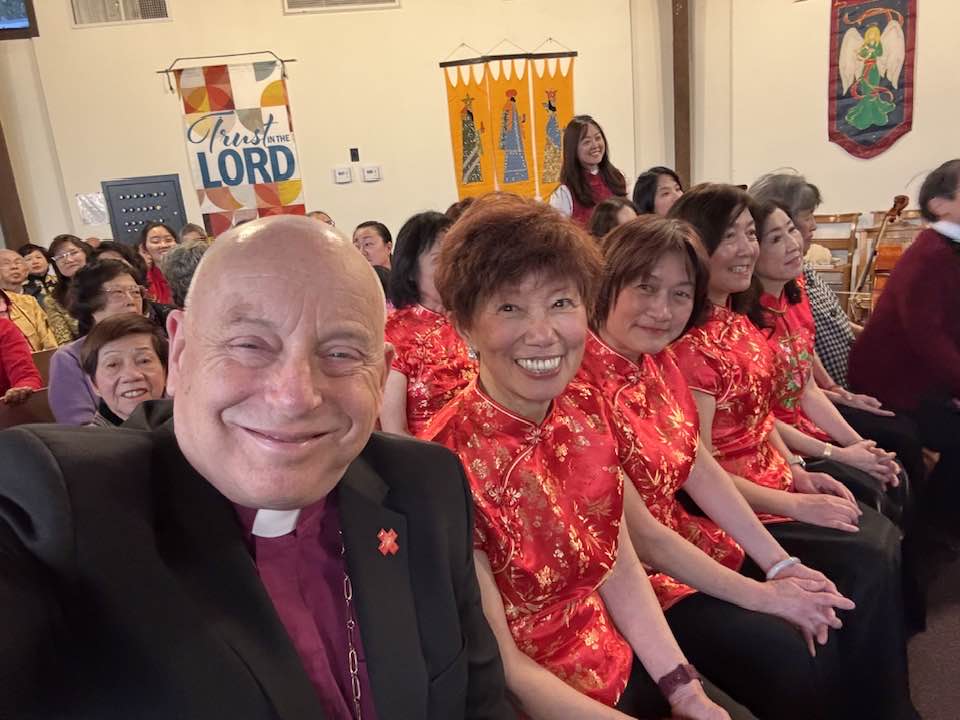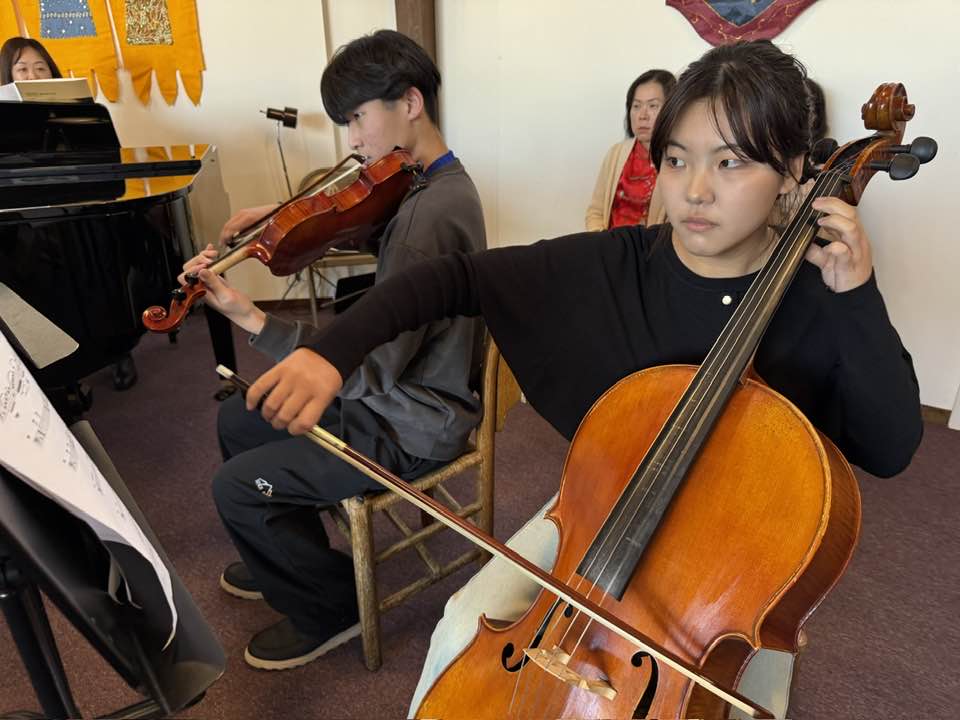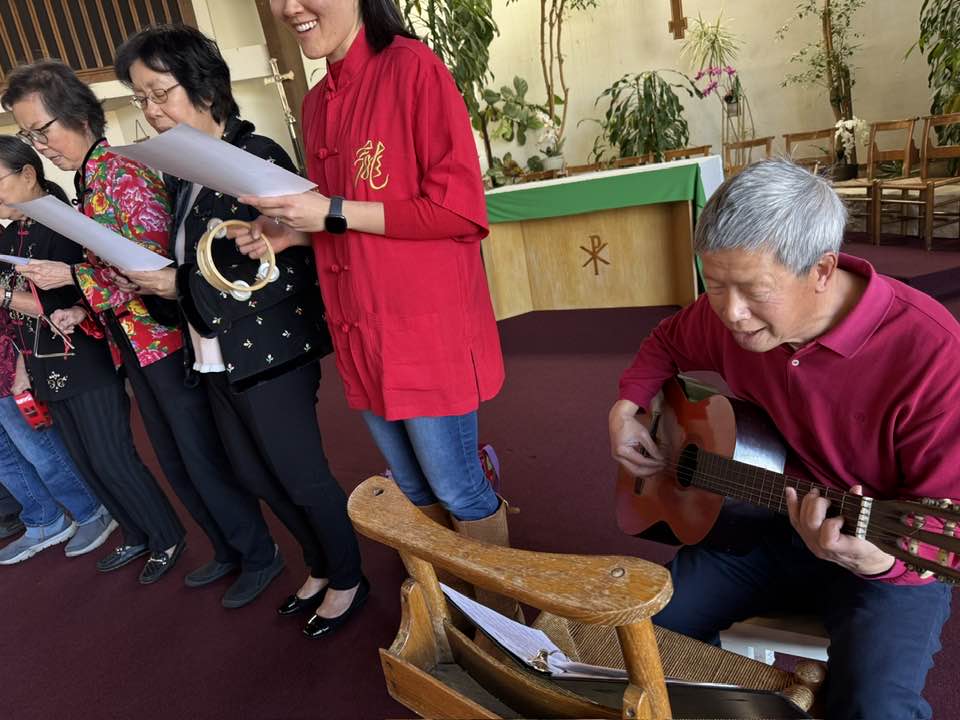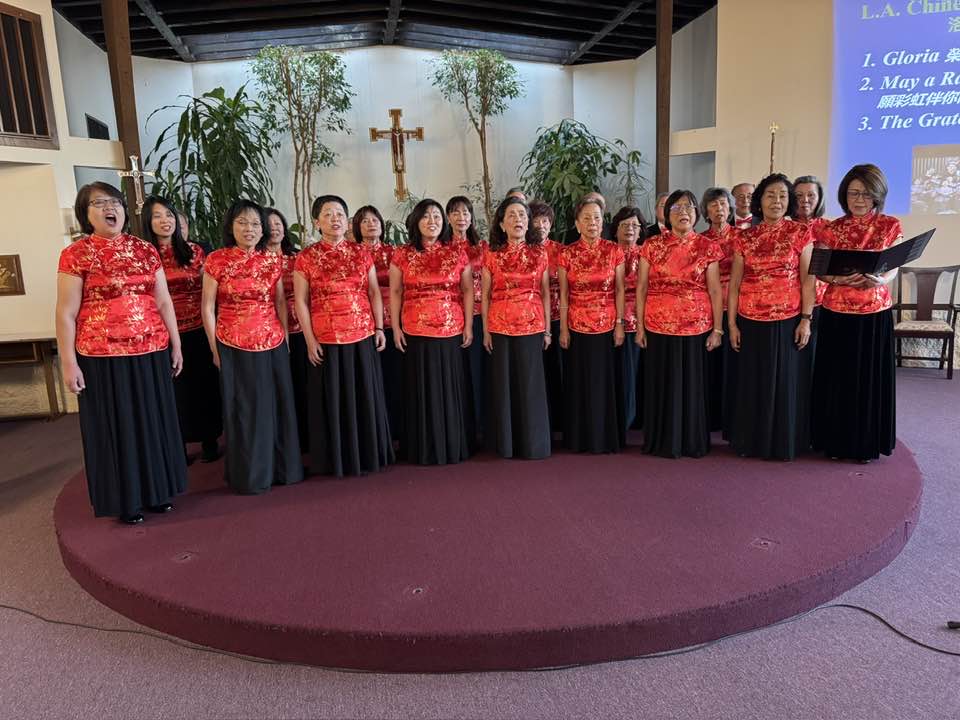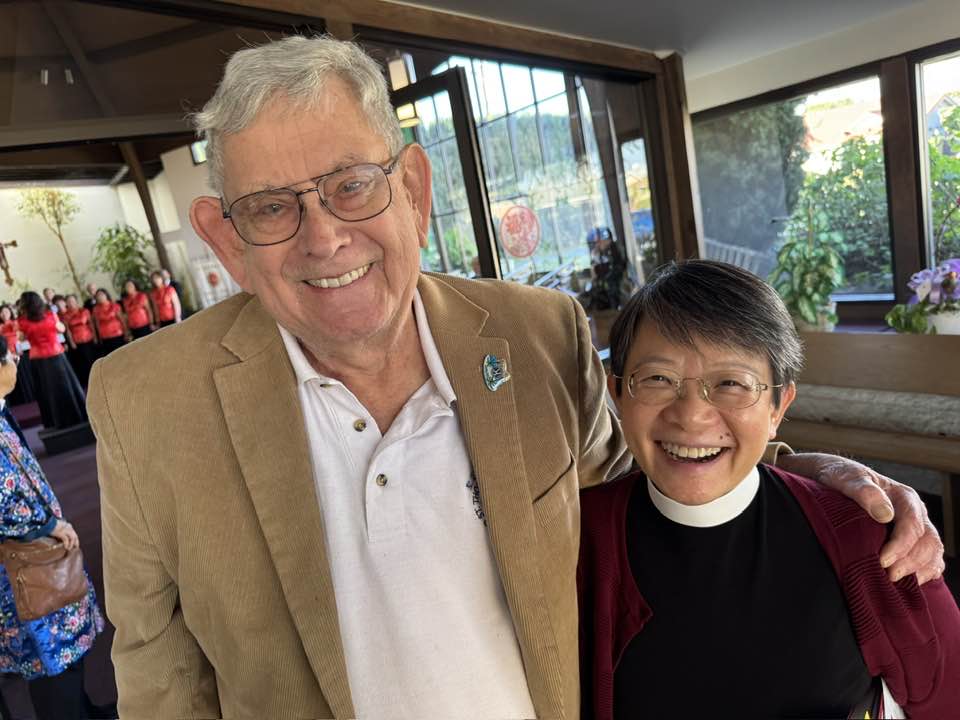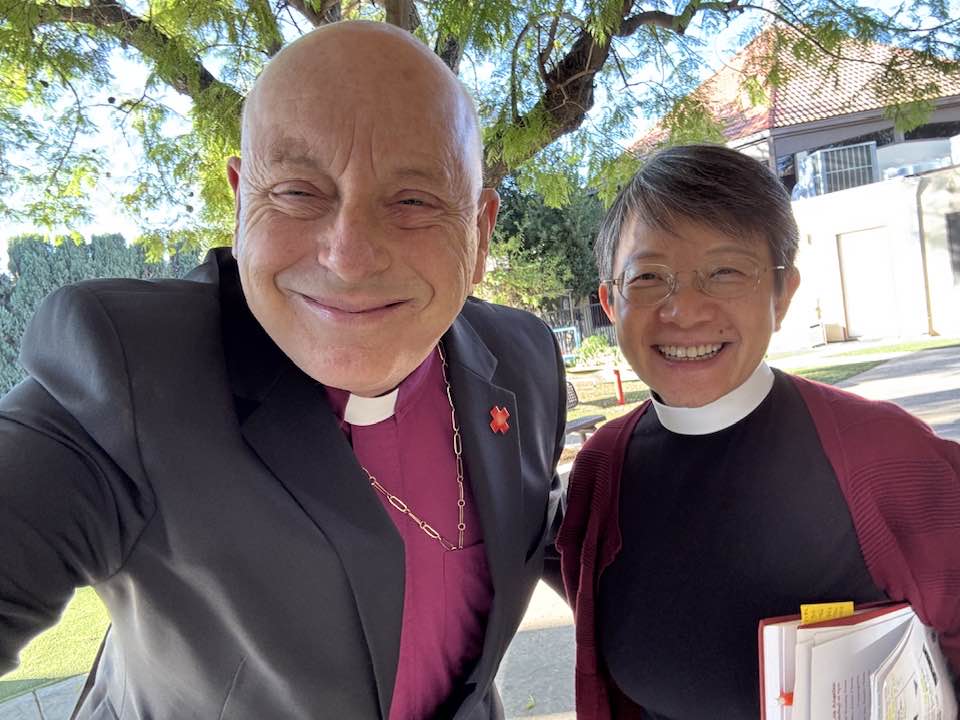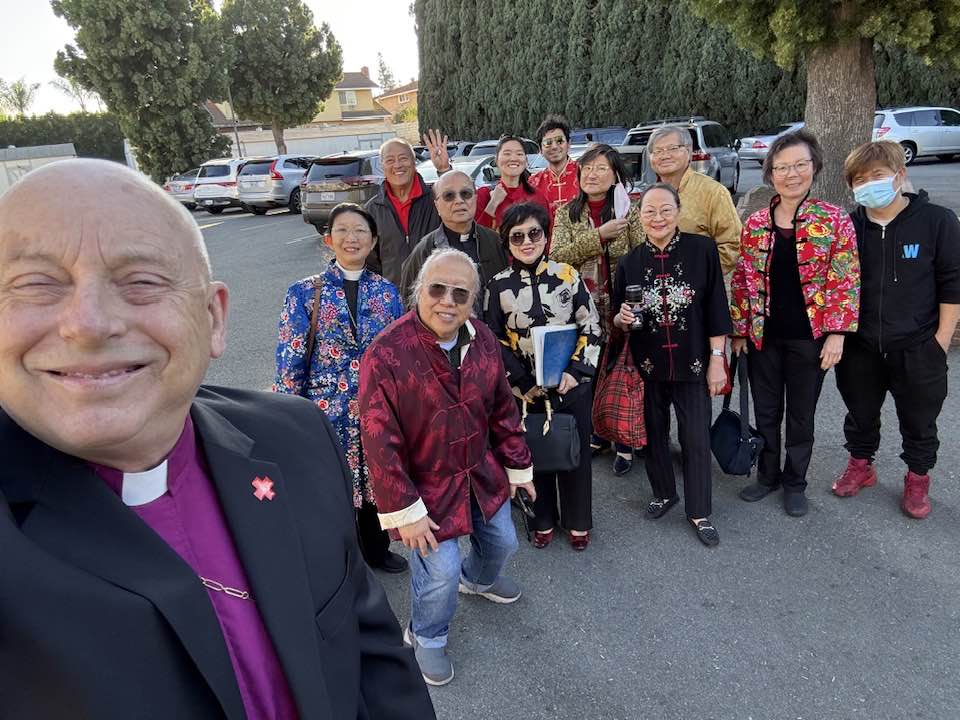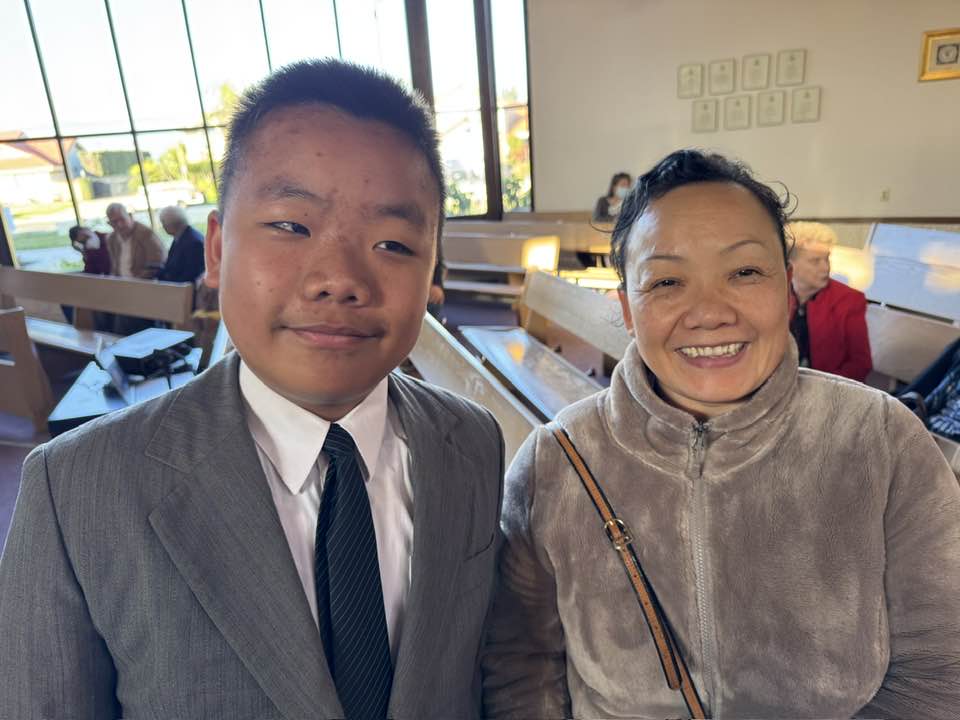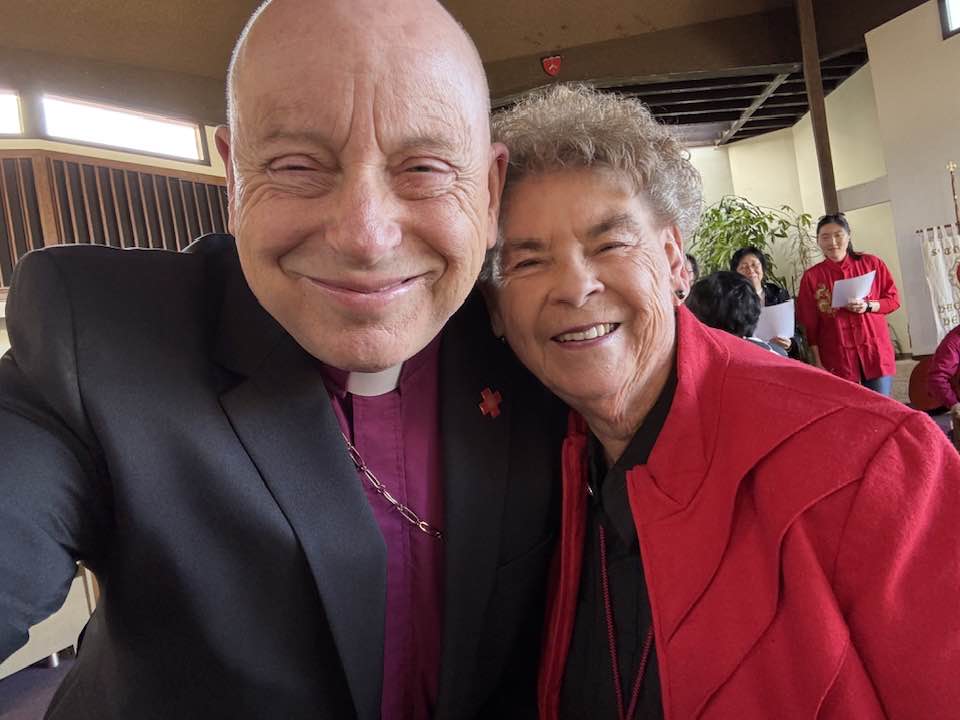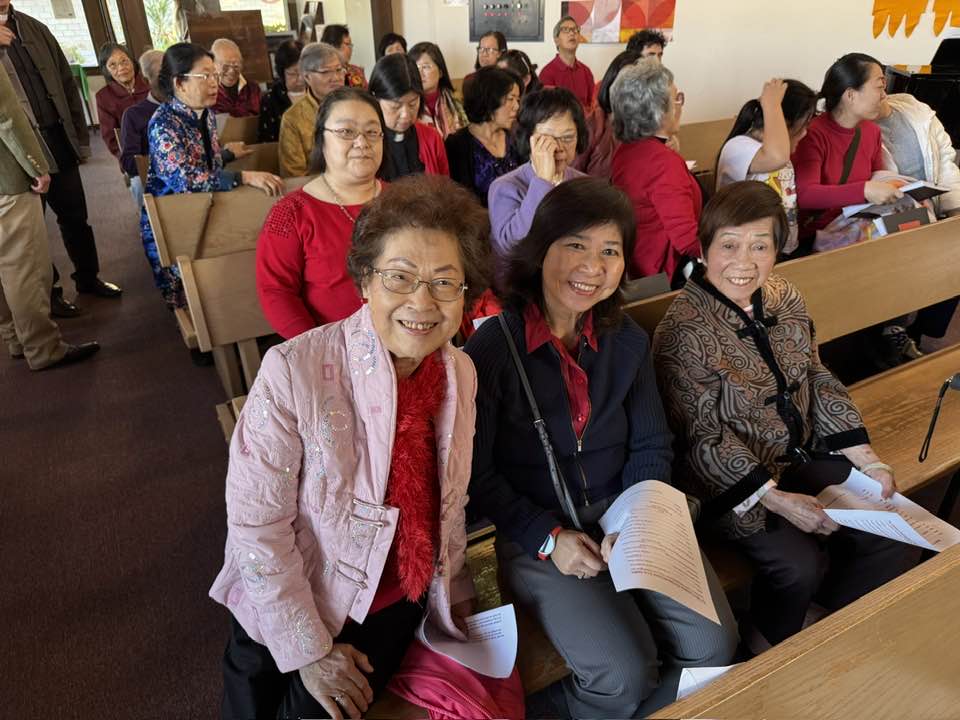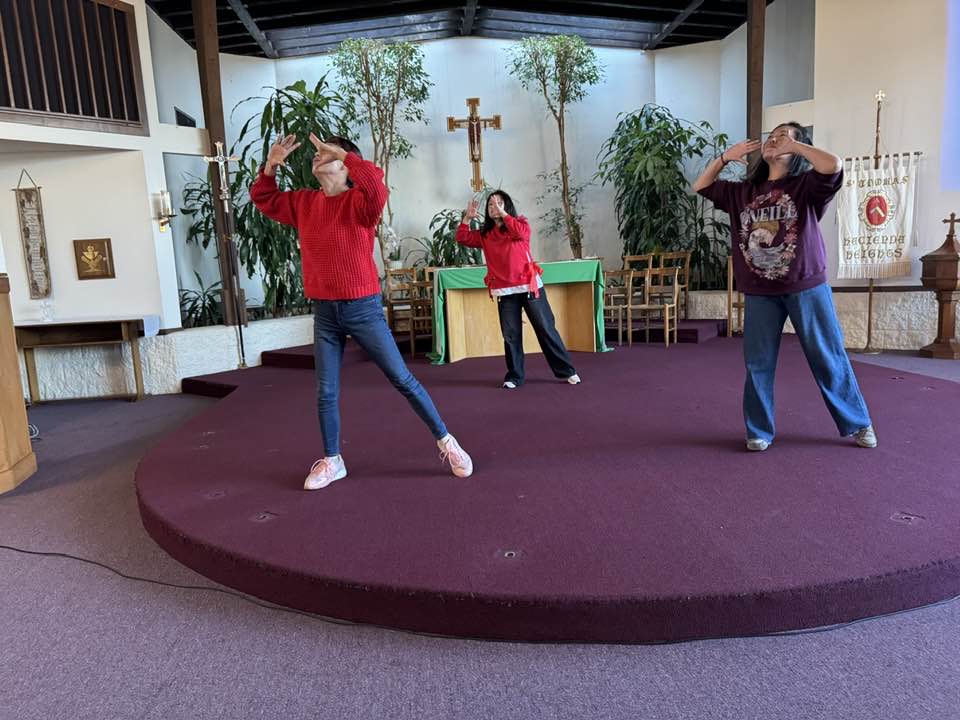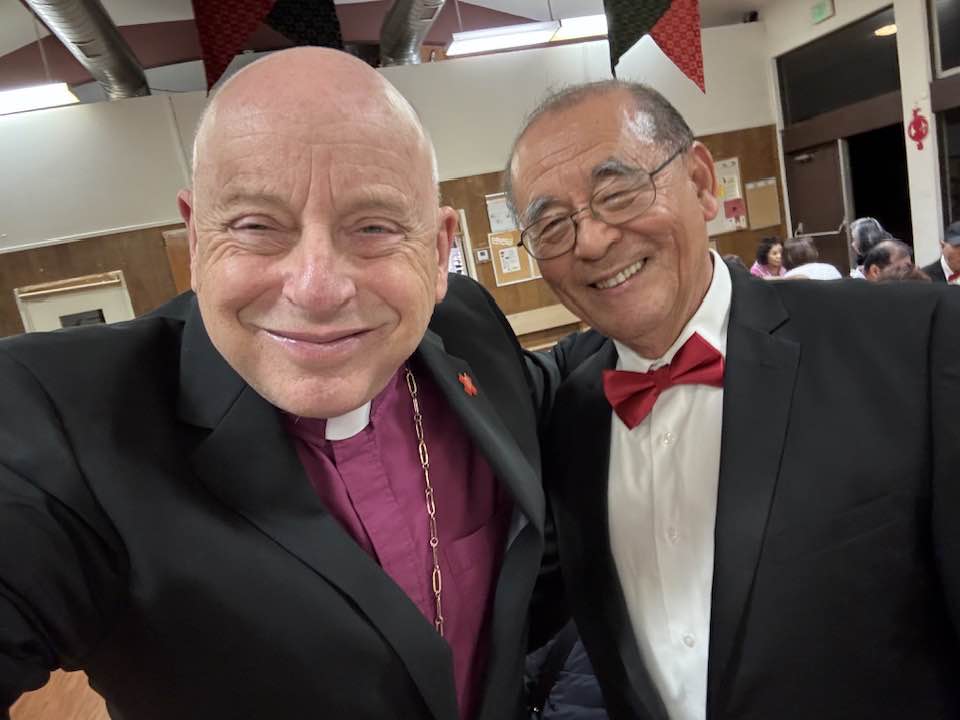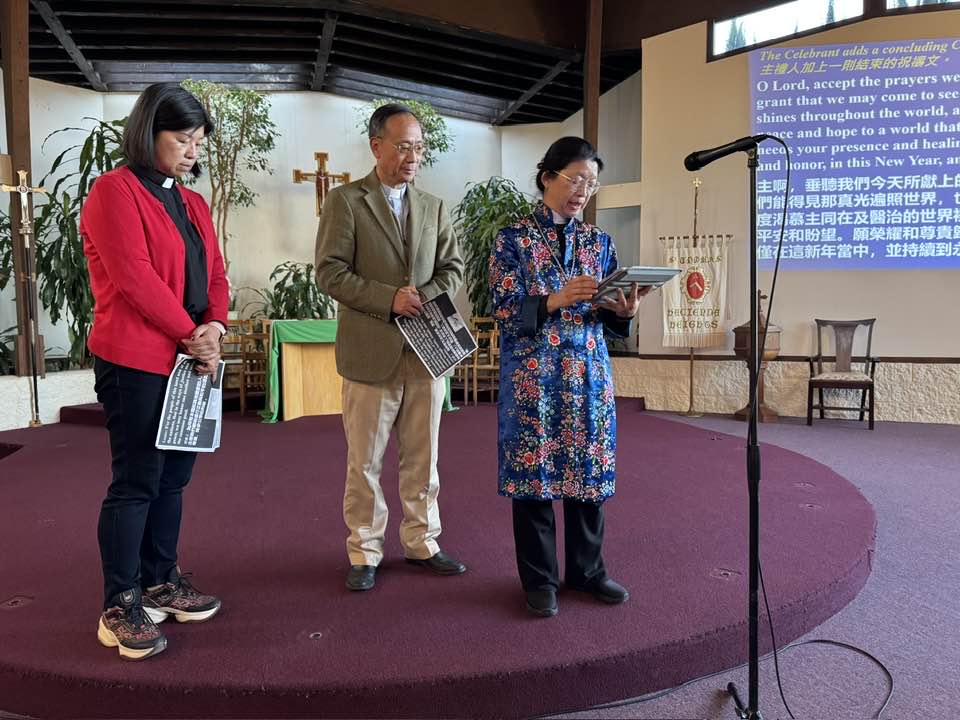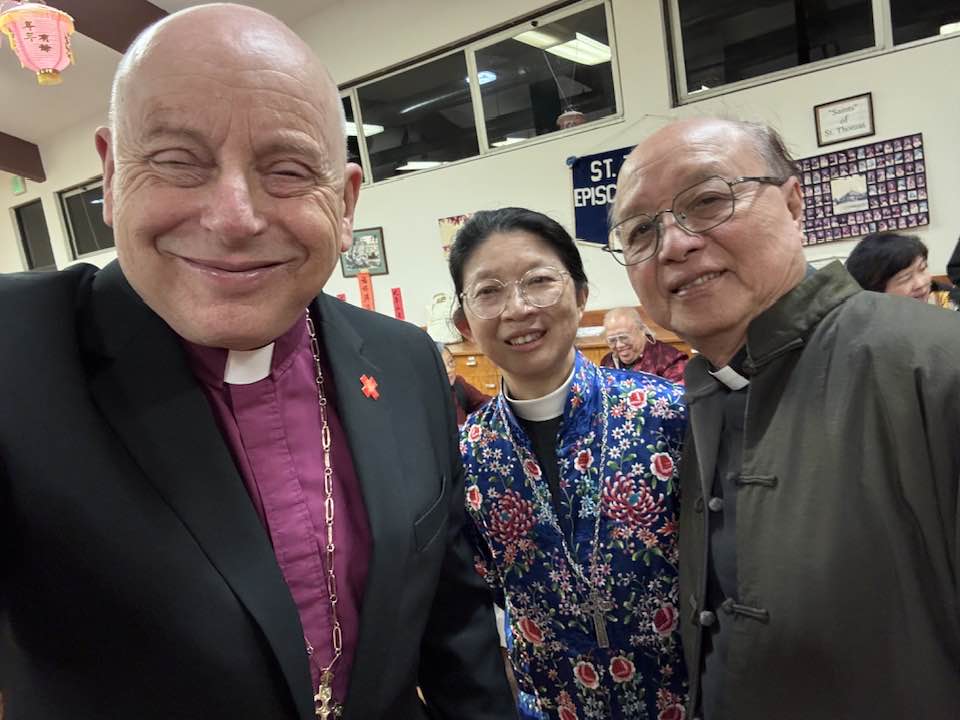
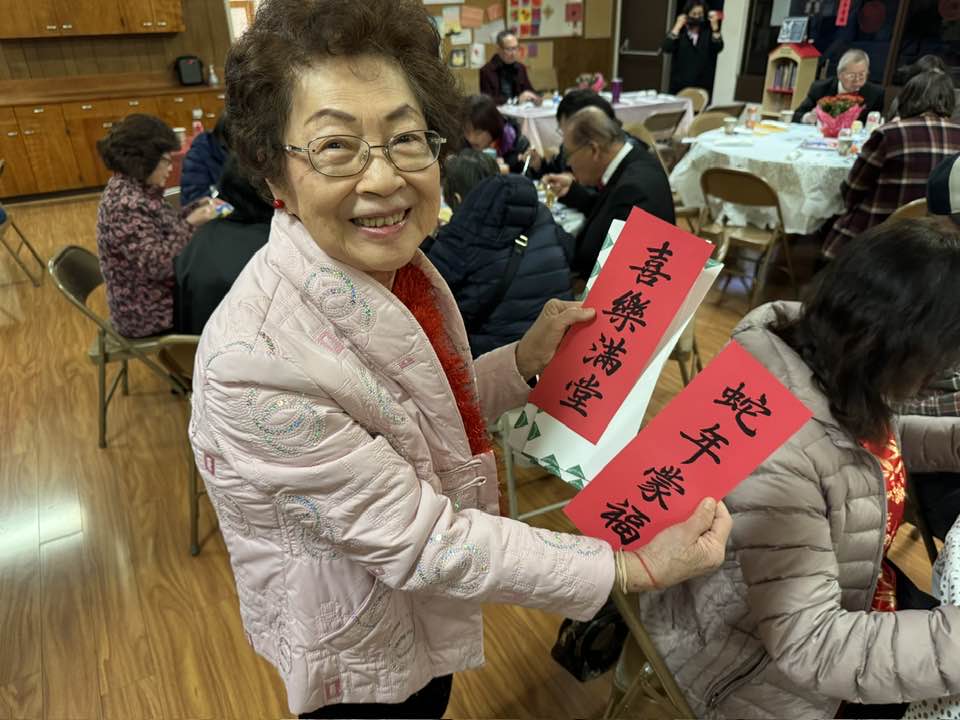
After COVID, I resolved never to take for granted the simple pleasure of being together in community — to worship, break bread, and share fellowship. Whenever we are, we change. If we ask questions and really listen to the answers, we receive new knowledge and insights. When we leave, we have been altered by our interactions, so the universe is different as well. Our fellowship creates new worlds. I think about it as a creative yin and yang between our solitary selves and our community selves. If we are the kind of people who enjoy being alone all the time, we miss being changed by relationship. If we like having people around all the time, we may miss the insights that come from our interior conversations. So we need both.
The same thing happens when my colleagues on the diocesan staff and I have our monthly meetings with those in charge of or assisting in our Chinese-speaking congregations – St. Thomas’ here in Hacienda Heights, St. Gabriel’s in Monterey Park, and The Church of Our Saviour in San Gabriel. Each time we meet, we check in, talking about our lives and our ministries. Then we do business. In recent months, besides talking about plans for this celebration, we’ve been working on the details of Taiwan Bishop Lennon Chang’s visit this summer. These meetings are among my favorites, because they have a yin and yang blend of personal and the professional, each giving strength to the other. If we spent all our time on check-in, we would feel we had wasted our time. If we spent all our time on work, we’d miss the transformative effect of relationship. Innovation comes from the personal and professional in a constant creative relationship.
Yin and yang are sometimes understood as dark vs. light or as opposites. Being alone in a room is the opposite of being in a room full of laughing family members and friends. Talking about business all the time is the opposite of sharing fellowship all the time. But that doesn’t mean that any one of these things is all bad. If we combine a substance with its opposite, what we hope for is the release of creative energy, and the world becomes just a little better – as we Christians say, the kingdom of God comes just a little closer.
Reading about the Year of the Snake, I learned about the traditional negative and positive associations of the snake as a metaphor. I also learned that this year is the year of the wood snake, which brings fire into the picture, because fire comes from wood. Fire is also a powerful metaphor, and a terrifying one, especially for those who lost so much in the wildfires. Fire of course destroys the wood; and when the wood is gone, the fire dies. So what we want is a fire that never goes out, and fuel that is never consumed – like the burning bush that Moses encountered in the wilderness, where the angel of the Lord commissioned him to lead the people of Israel through wilderness into Canaan.
Our reading from John’s gospel is also about yin and yang. We learn that Jesus Christ, in the form of the Word, was present at the beginning of all things – that all things came into being through the Word – that the Word is associated with life and light – and that the darkness will never overcome the light. I often think of this passage when times are hard, since it’s reassuring to remember that the light will shine no matter what happens. But it’s probably a mistake always to associate the darkness with loss and sorrow. In the story in the first chapter of Genesis, which should be read as a companion to the creation account in John, we learn that the Creator separated the darkness from the light without banishing the darkness. God created yin and yang from darkness and light and called it all good.
So this new year’s, we have our solitary selves and our community selves – our play and our work – our joys and sadnesses – our light and dark. As some of you may know, my wife, Kathy, and I spent many years working with former President Nixon. Mentioning his name may cause a yin and yang reaction, since his decisions had such a massive impact in the lives hundreds of millions of people of Chinese descent all over the world. Today is February 9. On January 9, which was his birthday, President Nixon would sometimes take out a yellow legal pad, draw a line down the middle, and make a list of opportunities and challenges. Things that were going well, and things that weren’t going so well. Things he could change, and things he could not.
President Nixon’s annual list of “pros and cons” amounted to a yin and yang diagram. So let’s make one of our own. In our diocese, the fires have wounded our hearts. Dozens of our neighbors lost their lives. In Altadena and Pacific Palisades, it will take years to rebuild. Fire destroyed the church building at St. Mark’s in Altadena and severely damaged or destroyed school buildings at St. Mark’s and St. Matthew’s in Pacific Palisades. At least 200 individuals and families lost their homes. Restaurant and domestics workers lost their jobs. These events belong to the darkness. Yet the light shines in people’s resolve to rebuild, the financial support offered by friends all over The Episcopal Church, and the hospitality that neighboring congregations offered both churches. We know enough about the spirit of God and the human spirit to be able to say that wrestling with the darkness will make the people of light shine brighter than ever. If we survive the darkness, we almost always grow stronger.
Turning from the wildfires to the fires of controversy in Washington, while this is not a political sermon, we live in ultra-political times. So our yin and yang list needs a few more entries. Changes in government policy have created anxiety and fear among immigrant workers and their families who are undocumented as well as members of the LGBTQ+ community. People sometimes say the times are dark, as though they are walking through the valley of shadow of death. But we have another word for that, we people of the living God – the word is wilderness. Remember Moses and his people. With them, even in the darkest night, we look for the pillar of fire that shows the way, the light in the darkness, our Christ, our pioneer of peace and justice. In the light of our hope, we can see that all around us, people are working for change and looking out for their neighbors. The wilderness people of the Hebrew Testament made it to the promised land. We will as well – because the darkness never overcomes the light.
Some events are so dark that it may seem the light will never shine again. One thinks again of those who died in the wildfires, especially those who may have been saved if government warnings had come on time. We pray that they have found safety in the arms of our God in Christ, who promised to lose no one whom he had made. But for those wrestling with the darkness this year, may we emerge from the struggle with renewed strength, inspiration, and faith. Remember that God never banished the darkness. Until the shadow of death crosses our path, we haven’t lived a fully human life. God just made space for the light and told us to keep our eyes fixed on the true light that has come into the world, no matter what. Stepping out into the new year, the year of the perpetually burning wood snake, if we keep our eyes wide open to the light of Christ, and join hands and arms with our neighbor to help them along the way, it promises to be a very good year indeed.
[My sermon at Sunday evening’s bilingual Lunar New Year joint Thanksgiving service, held at St. Thomas’ Episcopal Church in Hacienda Heights, hosted by our Episcopal Diocese of Los Angeles Chinese congregations and the Rev. Canon Ada Wong-Nagata, the Revs. Dr. Fennie Hsin-Fen Chang and Thomas Ni, and the Rev. Katherine Feng. Fennie, our minister of ceremonies and chief organizer, provided a Mandarin interpretation. Each church contributed music and dance ensembles. The LA Chinese Philharmonic Chorus, which rehearses at St. Thomas’ and celebrated its 20th anniversary last year with a concert tour in Taiwan, offered three special anthems. A festive dinner followed the service.]
